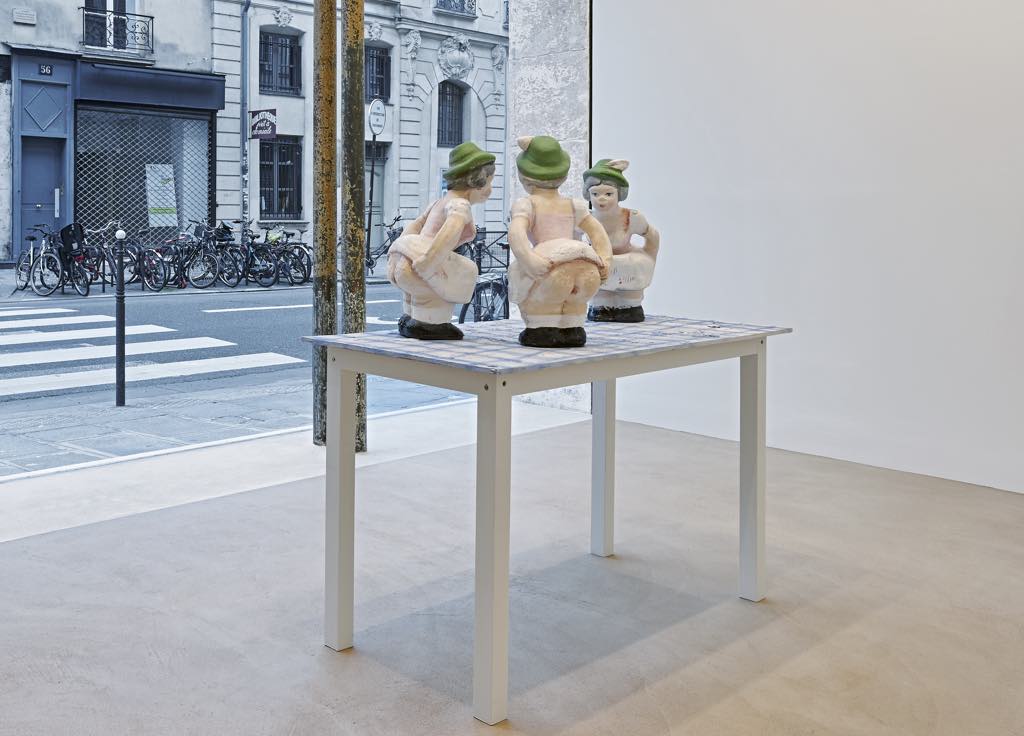
Defying the pandemic-induced gloom in the gallery world, commercial spaces seem to be proliferating in Paris’s Marais, with two new ones recently opened, both by Italian gallerists. The latest addition, the tiny Massimo De Carlo Pièce Unique, couldn’t be more different than the other, the Galleria Continua. The latter is a multistory space with a trash aesthetic (although that may change with the coming renovation) and a profusion of artworks and goods for sale, while the latter, opened last week, is all minimalist calm and elegance.
Massimo De Carlo, a leading contemporary art dealer who has galleries in Milan, London and Hong Kong, as well as a virtual galley, VSpace, hired the renowned Japanese architect Kengo Kuma to redo the retail space in a historic Marais building, in collaboration with PiM.studio Architects.
The space has been stripped down to its original dimensions and the stone walls and ceiling beams (painted white) uncovered. The most impressive features are the elegant white cupboard covering a whole wall in the backroom, and the beautiful – definitely a pièce unique – desk made of pierre-de-taille for the gallery assistants.
The idea was to avoid flashy architectural elements so as to focus on the artwork. The name Pièce Unique, meaning “one-of-a-kind piece” or “one piece,” is a brand that De Carlo purchased from gallerist Lucio Amelio, who opened a space with that name in Saint-Germain-des-Prés in 1989. De Carlo’s iteration will eschew the usual trappings of commercial galleries – no openings, dinners or other VIP events – and will show only one work or one artist at a time.

The first exhibition, “Clay Baby (m.l.),” is an installation of four near-identical ceramic sculptures by Los Angeles-based American artist Kaari Upson. These strange female “babies” have incongruously large breasts and are squatting and pulling up their dresses, their plump buttocks spread, some with red blotches around the anus. They look like they are about to defecate, like a caganer, a traditional nativity figure from Catalonia, supposedly a symbol of fertility and luck.
Upson’s often-autobiographical work, which includes sculptures, installations, drawings, paintings, performances and videos, has been described by Lisa Phillips, director of the New Museum of Contemporary Art in New York, as “open-ended, circuitous narratives that weave elements of fantasy [and] physical and psychological trauma.”
The clay babies are actually reproductions of a kitschy German porcelain figurine the artist inherited from her grandmother. Curator and art critic Myriam Ben Salah describes the original figurine as “one of those involuntarily acquired objects that are passed down from one generation to another like a genetic disease.”
Whatever they mean to the artist – pure kitsch, good luck or genetic disease – these disturbing sculptures make an odd impression amid the pristine, austere setting of the gallery, a new destination in the Marais, where the art is visible through the window at any time, night or day.
Favorite